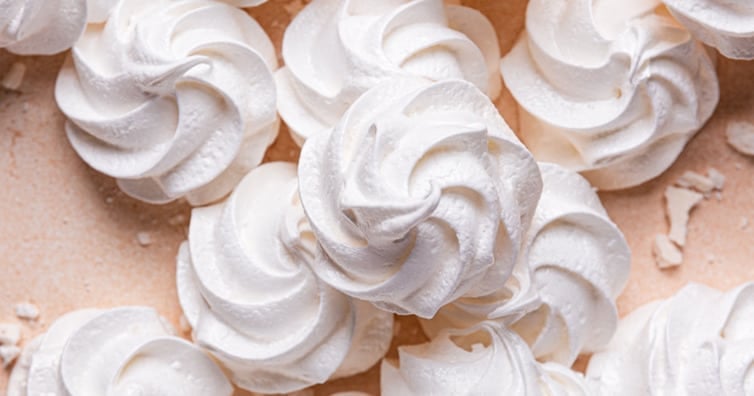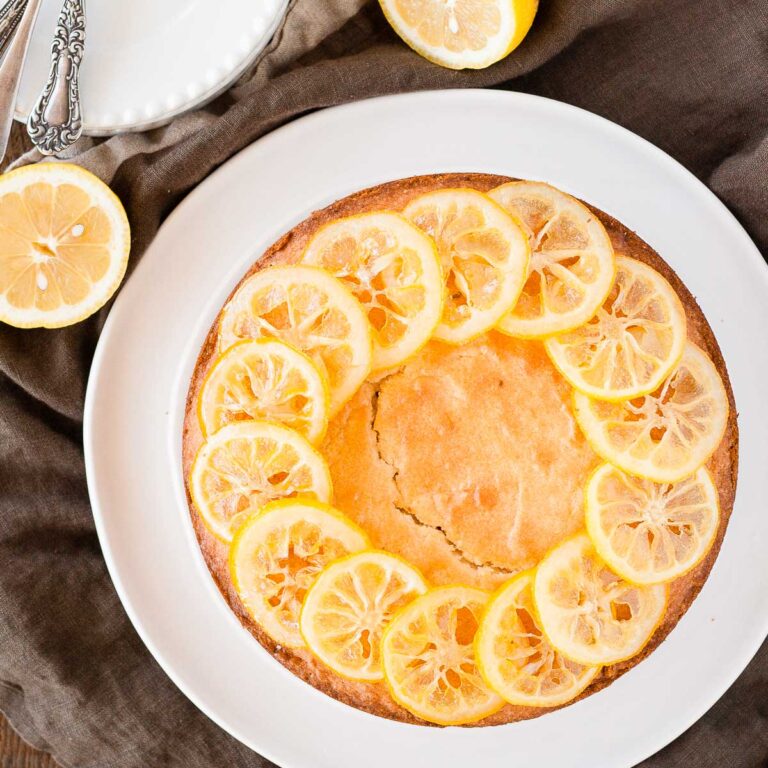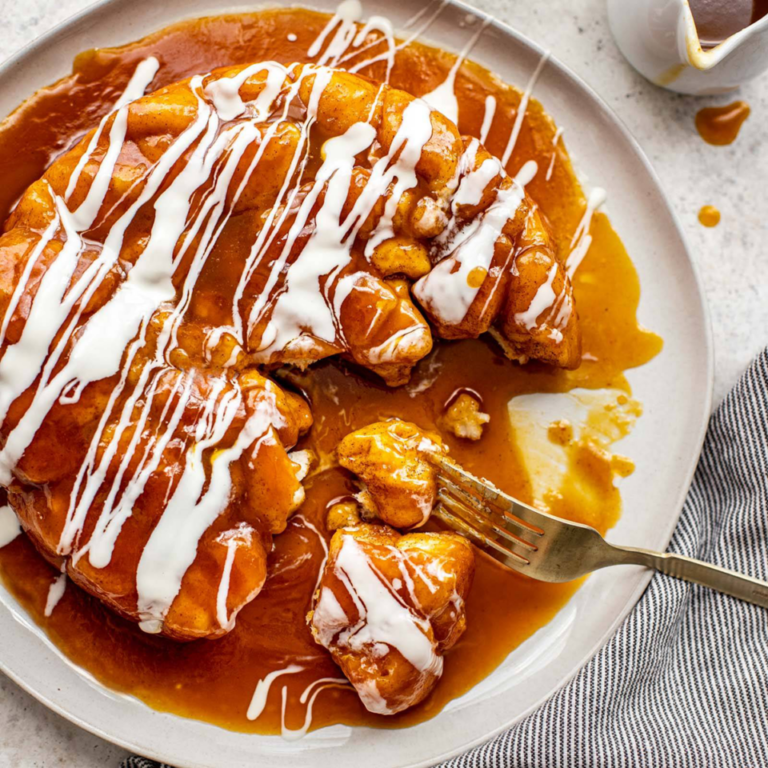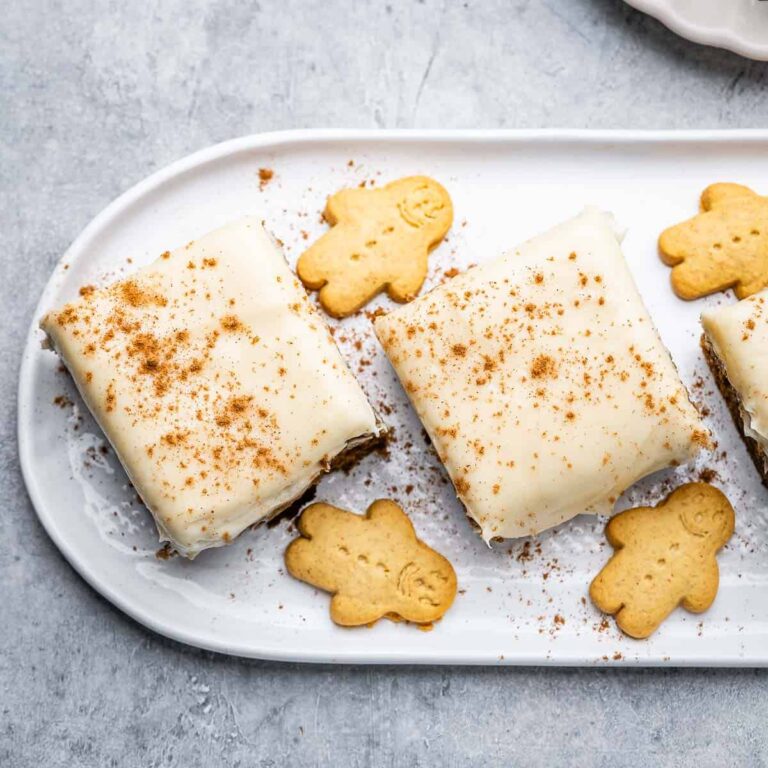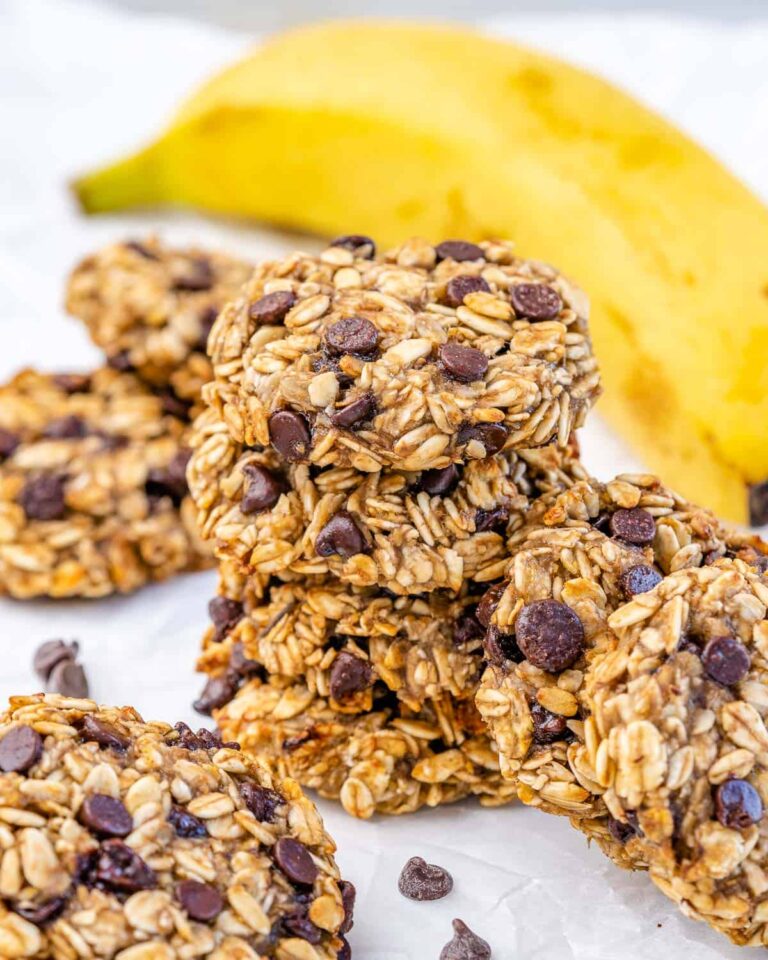Classic Meringue Cookies – Brown Eyed Baker
Crisp, light-as-air meringue cookies combine five ingredients for a delicate, naturally gluten-free dessert perfect for any occasion. This easy-to-make recipe walks you through how to flavor, color, and add mix-ins to this classic meringue recipe. With a melt-in-your-mouth finish, these delicate cookies make the perfect addition to a holiday cookie tray, afternoon tea, or a warm cup of coffee any time of day.

What are Meringue Cookies?
Meringue describes a dessert or candy made from whipping egg whites with sugar. From pavlovas to pie toppings, to silky smooth frostings, meringue can be used in various ways when it comes to baking.
Meringue cookies, or forgotten cookies, are bite-sized, lighter-than-air cookies made from whipped egg whites and sugar. They bake at a low temperature for an extended time until they are crisp on the outside and slightly chewy on the inside. You will know you have a good meringue if it:
- Whips to stiff peaks.
- Finishes crisp and dry.
- Melts in your mouth.
- And is lighter than a feather.
The Key Ingredients
The beauty of these little cookies is that they don’t require much in the way of ingredients. Below is a quick overview; as always, be sure to check the recipe card for a full list of ingredients and quantities.


- Egg Whites: These are the star of what makes a good meringue, so be sure to use fresh egg whites (not pasteurized) at room temperature.
- Cream of Tartar: Used to stabilize the egg whites so they can achieve high, stiff peaks.
- Vanilla and Salt: For flavor!
- Sugar: Regular granulated white sugar adds sweetness and helps stabilize the meringue cookies’ structure.
How to Make Meringue Cookies
Now that we know what makes a good meringue cookie, let’s get to baking!
Step #1: Prep – Preheat the oven to 225°F and line a large baking sheet with parchment paper; set aside.
Step #2: Make the Meringue – Beat the egg whites on medium speed until frothy, then add the cream of tartar, salt, and vanilla. Increase the mixer speed to medium-high speed and beat to soft peaks, then gradually add the sugar and beat until the mixture is glossy and stiff peaks form.


Step #3: Fill a Piping Bag and Pipe the Cookies – Fit a pastry bag with a large star tip (I use the Ateco #827 for an open star, and the Ateco #864 for a French star) and fill it with the meringue batter. Pipe the cookies onto the prepared baking sheet. You do not need to leave much room between the cookies, as they will not spread.
Step #4: Bake and Cool the Cookies – Bake the cookies for 1 hour or until firm to the touch. Turn the oven off and prop the oven door open with a wooden spoon until the cookies are completely cool. (I usually bake them in the evening and then leave them in the propped-open oven overnight to cool and set up completely.)


Flavor, Mix-ins, and Coloring Options
- Flavoring: Add flavors such as peppermint, almond, or lemon extract to give the meringue a different flavor. Incorporate the flavor when the vanilla extract is added.
- Adding Mix-Ins: Common mix-ins to try in your meringue cookies include chocolate chips, chopped nuts, or freeze-dried fruit. Carefully fold your mix-ins into the meringue before piping and baking.
- Coloring: To make a colored meringue, add food coloring (I recommend gel food coloring to eliminate extra liquid being introduced into the meringue) once the meringue has reached stiff peaks, and beat until the color is completely incorporated. A red and white-swirled meringue with peppermint extract would be adorable for the holidays!
Storage and Making-Ahead
- Storage: For fresh, crisp meringue cookies, store them in an airtight container in a cool dry place for 1 to 2 weeks, as long as they stay dry. Do not put your meringue cookies in the refrigerator as this will add moisture to them. Keep the cookies away from excess heat or moisture, as it will cause them to become chewy.
- Make-Ahead: Since they keep well in a dry, cool, airtight container, you can make these up to 2 weeks in advance. However, I would keep in mind they will take on moisture if the weather is more humid than dry.
- Reheating: If your cookies have taken on moisture, you can try baking them on a parchment paper-lined baking sheet for 10 minutes at 200°F to dry them out again.


FAQ and Troubleshooting
A couple of common questions about meringue cookies:
Why are my cookies chewy?
Chewy meringues are the result of two possible situations, under-baking and humidity. If they are under-baked they might always be a little chewy. For humidity, you can try popping the meringues back into the oven on a parchment paper-lined baking sheet at 200°F for 10 minutes to try crisping them up a bit.
How do I know when they are done?
Your cookies are done when they are crisp to the touch, have not taken on color during the baking, and can easily lift free from the parchment paper. If the meringue does not lift easily from the parchment paper keep baking and check back frequently until it can easily be removed.
It is possible to over-bake your meringue cookies. Beads of moisture form on the surface as a result of overcooking.
More Recipe Tips for the Perfect Meringue Cookies
Many people feel intimidated by the idea of making meringue. These cookies often have a reputation for being a bit finicky, but I can assure you, with a few helpful tips, you will be well on your way to mastering the art of the meringue cookie.
- Clean bowl and utensils: Even the slightest hint of fat (egg yolk, residual oil on a bowl or beaters, etc.) can prevent the egg whites from reaching stiff peaks. Ensure that everything is completely clean and dry before beginning.
- Gradually add the sugar: It’s important to add the sugar only a little bit at a time (a couple of tablespoons). Adding it slowly ensures that the sugar gets absorbed into the egg whites, eliminates a gritty texture, and reduces the chances of the meringue collapsing and failing to reach stiff peaks (this can happen if a lot of sugar is added all at once).
- You can’t overbeat meringue: It’s true! You can’t ruin it by mixing too much, so once all of the sugar is added, be sure that your meringue is glossy and that you have super firm, stiff peaks when you remove the beater from the mixer. Don’t be afraid to mix a little longer if it appears too soft.
- Equipment: The easiest way to make meringue is with a stand mixer (hands-free!), but I routinely make it with my trusty hand mixer. You can also make it by hand, use a large wire whisk and some elbow grease! It will take longer, but it can be done!
- Weather: Meringue is notoriously sticky and difficult to whip into stiff peaks on humid days. I do notice a difference when I work with meringue or bread dough on a dry winter day vs a warm summer day, even with central air. To keep issues at bay, opt for a day with low humidity.
🌟 Check out my How to Make Meringue guide for additional troubleshooting tips.


More Meringue Recipes You’ll Love
If you make this fresh strawberry pie recipe and love it, remember to stop back and give it a 5-star rating – it helps others find the recipe! ❤️️


Meringue Cookies
This classic meringue cookie recipe makes light as air, crisp meringue cookies for a delicate dessert that melts in your mouth!
- 4 egg whites, at room temperature
- ½ teaspoon cream of tartar
- 1 teaspoon vanilla extract
- Pinch of salt
- 1 cup (198 g) granulated sugar
-
Preheat oven to 225 degrees F. Line a large baking sheet with parchment paper; set aside.
-
Using an electric mixer with the whisk attachment (or a hand mixer), beat the egg whites on medium speed until frothy, then add the cream of tartar, salt, and vanilla extract.
-
Increase the mixer speed to medium-high and beat to soft peaks. While continuing to beat the egg whites, gradually add the granulated sugar and beat until glossy and stiff peaks form.
-
Fit a pastry bag with a large star tip (I use the Ateco #827 for an open star, the Ateco #864 for a French star) and fill it with meringue.
-
Pipe the cookies onto the prepared baking sheet. You do not need to leave much room between the cookies, as they will not spread.
-
Bake the cookies for 1 hour, or until firm to the touch. Turn the oven off and prop the oven door open with a wooden spoon until the cookies are completely cool. (I usually bake them in the evening and then leave them in the propped-open oven overnight to cool and set up completely.)
-
Carefully remove from the parchment and store in an airtight container at room temperature, keeping them away from excess heat or moisture (it will cause them to become chewy).
- Eggs: Use room temperature eggs. Egg whites from a box or carton are not recommended.
- Clean bowl and utensils: Even the slightest hint of fat (egg yolk, residual oil on a bowl or beaters, etc.) can prevent the egg whites from reaching stiff peaks. Ensure that everything is completely clean and dry before beginning.
- Gradually add the sugar: It’s important to add the sugar only a little bit at a time (a couple of tablespoons); adding it slowly ensures that the sugar gets absorbed into the egg whites and eliminates a gritty texture, and also reduces the chances of the meringue collapsing and failing to reach stiff peaks (this can happen if a lot of sugar is added all at once).
- You can’t overbeat meringue: It’s true! You can’t ruin it by mixing too much, so once all of the sugar is added, be sure that your meringue is glossy and that you have super firm, stiff peaks when you remove the beater from the mixer. Don’t be afraid to mix a little longer if it appears too soft.
- Adding colors/flavors: If you want to add different flavors, you should do so when the vanilla extract is added. To make a colored meringue, add food coloring (I recommend gel food coloring to eliminate extra liquid being introduced into the meringue) once the meringue has reached stiff peaks, and beat until the color is completely incorporated.
- Equipment: The easiest way to make meringue is with a stand mixer (hands-free!), but I routinely make it with my trusty hand mixer. You can also make it by hand, just use a large wire whisk and some elbow grease! It will take a little longer, but it can be done!
- Weather: Meringue is notoriously sticky and difficult to whip into stiff peaks on humid days. While central heating and cooling eliminate most problems, I do notice a difference when I work with meringue or bread dough on a dry winter day vs a warm summer day, even with central air. To keep issues at bay, opt for a day with low humidity.
Calories: 12kcal, Carbohydrates: 3g, Protein: 1g, Fat: 1g, Sodium: 3mg, Potassium: 6mg, Sugar: 3g, Calcium: 1mg, Iron: 1mg
This recipe was originally published in March 2021.
Photography by Dee Frances

